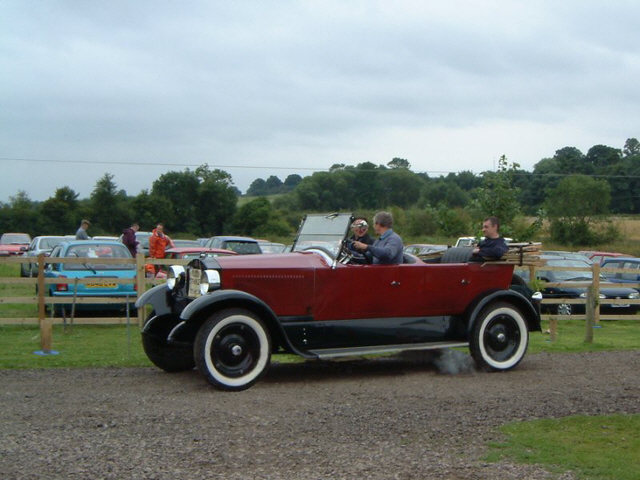
I learned this today. Steam cars outnumbered internal combustion engine cars and electric cars from 1900 until about 1907.
Steam engines are external combustion engines because the fuel is burned away from the engine. They release far fewer polluting gases than internal combustion engines. A steam engine works by burning a fuel source to heat water, making steam. The steam is under pressure and directed to power the engine. The steam can be stored to be used later, in the same way as a battery. Because they can produce pressurized steam consistently, steam cars don’t need a clutch or gears, the same as electric cars.
The steam engine was invented in the early 17th century and Thomas Savery made the first commercial steam-powered device in 1698, which was a water pump. The first steam-powered engine was Thomas Newcomen’s atmospheric engine in 1712. His engine worked by creating a partial vacuum under a piston by condensing steam within a cylinder. James Watt took the steam engine to the next level in the 1760s and the Industrial Revolution took off. Steam power was soon everywhere and doing everything.
To us, a steam-powered car seems a trifle strange, but in the middle of the 1700s steam-power was the natural way to power things. A steam-powered car was the natural next step. From 1679, people experimented with steam-powered vehicles, but these were either toys or just experiments. The first real steam-powered vehicle was made by Nicolas-Joseph Cugnot in 1769. It was a vehicle for the French army and it could carry 4 tons at 4 km/h.
Advances in steam vehicles continued, but they always looked like small steam trains. The engine was always separate and they had to have a large boiler and a chimney. This hampered their progress. On top of this, the Locomotive Act of 1861, virtually stopped development. Vehicles were limited to 4 miles an hour in cities and 10 miles an hour in the countryside. A man with a red flag or a red light had to walk in front of the vehicle at all times. Demand for the vehicles shrank and development slowed.
In the 1890s, steam cars began to be developed more commercially. The gasoline internal combustion engine had been invented by this point, but it was still new and had a lot of teething problems. It was noisy, smelly, vibrated, and you had to start the car with a crank handle. Sometimes the car would misfire and the crank handle could break the arm of the person trying to crank it. Steam, on the other hand, had been around for centuries. People were comfortable with it and it was much easier to use. It took a while to start the car in the morning, but people didn’t mind that.
A lot of steam car companies were developed in America at this time, where the steam car became popular. The shape changed and the boiler was placed inside the car. They began to look more like cars. The boiler was large and took up most of the car, meaning they were heavy, but advancing technology slowly made them smaller and lighter. They also started to make use of a radiator to condense the steam, giving them more water to use and increasing their range.
In 1902, 485 out of 909 cars sold in America were steam cars. 53%. In 1906, a steam-powered car set the land speed world record of 127 MPH. They were becoming more popular and a lot of companies sprang up to produce them, but their days were numbered. In 1908, Henry Ford started to mass-produce the Model T. His production methods made the cars very cheap. Steam-powered cars could not be made in the same way. By 1910, a steam-powered car cost 6 times more than a Model T. However, the steam-powered cars still had their lack of a hand crank handle over the Model Ts. That was, until 1911 when the electric starter motor was invented. Now, gasoline cars were both cheap and easy to start. This was the beginning of the end. Some companies managed to last until the 1920s, but steam power was on the way out. And, once Big Oil realized it could sell more oil with gasoline cars, there was no going back.
So, in 1902, steam-powered cars outsold gasoline and electric cars. This was because they were relatively efficient and they were easier to drive. They could be started without a hand crank and they didn’t release polluting gases. And, most importantly, steam-powered engines had been around for over 150 years, so people were used to them, unlike the new internal combustion engines. And this is what I learned today.
Picture: By Amos Wolfe – Image from an original photograph by Amos Wolfe taken 12th August 2001. Edited to remove traces of orange fencing and traffic cones by Amos Wolfe on 22nd August 2001., CC BY-SA 2.0, https://commons.wikimedia.org/w/index.php?curid=588767
Sources
https://www.carkeys.co.uk/news/why-does-nobody-make-a-steam-powered-car
http://www.stanleymotorcarriage.com/GeneralTechnical/GeneralTechnical.htm
https://www.thoughtco.com/history-of-steam-powered-cars-4066248
https://en.wikipedia.org/wiki/History_of_steam_road_vehicles
